The number of national insurance contributors increased by 47,883 people in May in seasonally adjusted terms, and for the first time exceeded 20.7 million (20,709,078). In the first five months of the year as a whole, 468,184 jobs were created, completing the best January-May period in the historical series.
In terms of average social security affiliation, for the first time there were more than 20.8 million people (20,815,399), with 200,411 added in the month of May, representing a month-on-month increase of 0.97%. In year-on-year terms, growth is 2.9%, with 582,676 more contributors than a year ago.
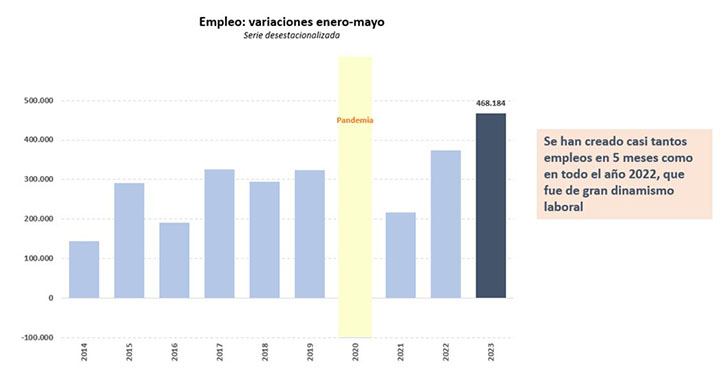
Employment in innovative activities remains buoyant
Compared to the pre-pandemic level (February 2020), affiliation has grown by almost 1.3 million in seasonally adjusted terms. Employment growth compared to before the pandemic is especially notable in high value-added sectors, such as Information Technology and Telecommunications, where the number of employees has grown by 22.3% compared to that recorded before the pandemic, and Professional, Scientific and Technical Activities, which grew by 13%. Since the end of the pandemic, one in four new contributors (almost 270,000 in absolute terms) has joined these highly productive sectors.
Youth employment has also performed better than average, increasing by 10.1% since 2019, 3.1 percentage points higher than the economy as a whole. There is also greater dynamism in the case of female employment. More specifically, it has increased by 8.6 %, three points more than for men, the percentage of female contributors thereby reaching 47.2 % for the first time.
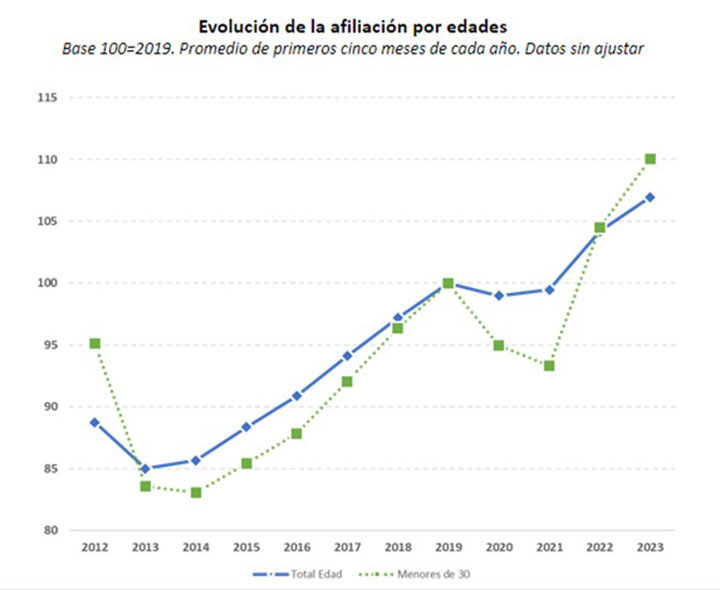
86% with permanent employment
Seventeen months after the entry into force of the labour reform, its positive effects on stabilising employment and improving its quality are still patent. In May, the percentage of temporary contract workers remained at an all-time low of 14%, less than half of what it was before the labour reform (30%).
In the case of those under 30 years old, temporary employment has gone down by 32 points with respect to its pre-reform level, from 53% to 21%.
Overall, there are now 3 million more contributors on permanent contracts now in December 2021, the last month before the reform came into force.
Another indicator of greater stability is the increase in the average length of contracts that have been terminated. Between January and May this year, the average length increased by 67 days compared to the same period in 2019, the last comparable year prior to the impact of the pandemic.
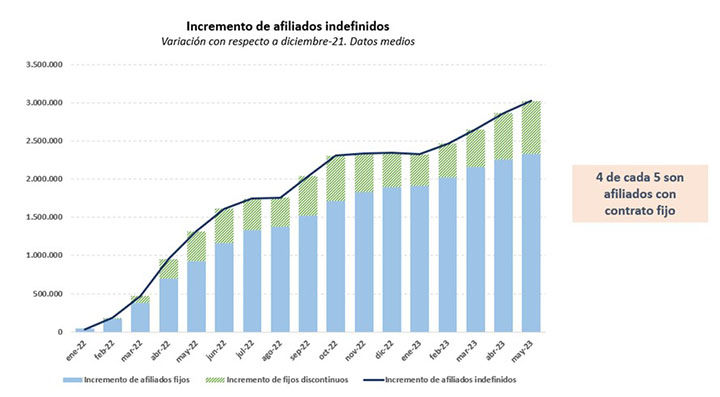
Of the 4.1 million contributors who had a temporary contract in the first quarter of 2022 and are still registered, 54% (2.3 million) now have permanent contracts. If we focus on the group of young people, this percentage is even higher: there were 1.1 million under 30s with a temporary contract in the first quarter of 2022, 66.3% (746,763) of which now have a permanent contract.
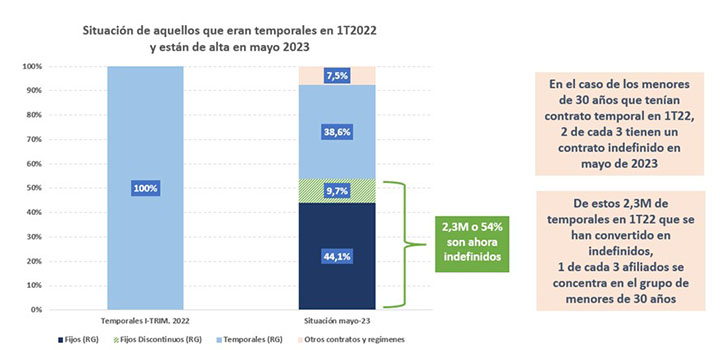
Furthermore, the number of workers on ERTEs (temporary regulation of employment) remains at minimum levels, at around 11,000 people, 0.1% of all contributors.
Improved social security revenue
The strong dynamism of the labour market is helping to strengthen the sustainability of the pension system: revenue from social security contributions grew by 9.3% in the year to April, the highest year-on-year increase in this period in the last 16 years.
Moreover, the ratio of contributors to pensioners stands at 2.41, its highest level in the last decade.
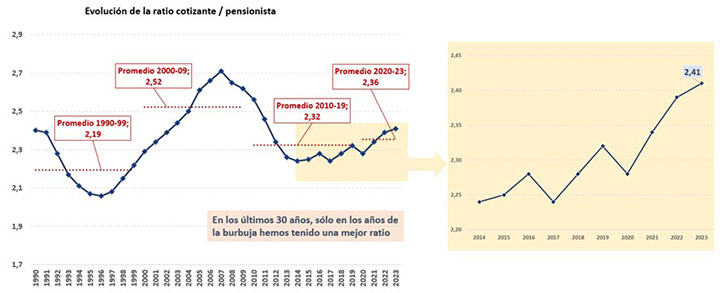
Non official translation





